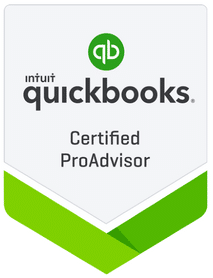- Patrick Roney
- (877) 503-8607
Follow Us :
Follow Us :
Proledge
February 17, 2014

Last week we talked about how technology has changed where and how we work. This week we’re examining how that same technology has changed the landscape of marketing conversations and what small businesses can do to make the most of every point of communication – whether that’s B2B or B2C.
In an age where almost everything can be accomplished with the click of a button or the swipe of a card, people can literally avoid human contact altogether if they want to. If you’re old-fashioned, you probably still walk in the bank, stand in line and discuss the weather with your favorite teller as you deposit, transfer or withdraw funds. If you’re a glutton for convenience, you have the bank’s app, snap a photo of your check and deposit it without leaving the comfort of your easy chair.
We live in a world where convenience is king – and it’s getting harder and harder to stand out with the amount of data and information available on the web. So, what is a small business to do?
One suggestion… speak human.
A few weeks ago Bryan Kramer, a Social Business Strategist and ad agency CEO opened up dialogue among the marketing community about the importance of examining our dialogue with consumers.
Social media platforms have given a public voice to whoever wants one. From tweens to grandparents – the whole world is sharing, pinning, tweeting, checking in and participating in global conversations. The result has been overwhelming demand for humanity from the businesses consumers patronize and the brands they prefer. People want to be a part of something bigger than themselves. They want to feel good about where they spend their money and they’re willing to use their voice to be your brand advocate if you do it right.
So, how does an emotionless business speak human and engage with their audience on an emotional level?
Below are a few simple suggestions I picked up from Kramer:
While kissing people may be an easy way to get people’s attention, the act of “Keep It Simple, Stupid” is sometimes the hardest. Enough said.
I can’t tell you how many meetings I’ve been in where acronyms are used so often that my brain ends up spending so much time trying to decipher what they mean instead of focusing on the actual thoughts trying to be conveyed. Acronyms can have their place (see Rule #1 above), but not when they replace communicating information to someone else, who might not understand your word full of capital letters.
In order to know what will resonate simply with your audience, put yourself in their shoes. What’s the context of their world? If you were them, what would you like to hear? The message has to resonate with them – not necessarily you – to be heard.
Our Chief Creative Officer, Courtney Smith, always says “Market to the heart, and sell to the head.” People love facts, and statistics are great proof points when you’re selling. But in my experience, my gut is the only indicator to leading innovation. Your gut will tell you if something’s too risky. It will drive exhilaration when you throw caution to the wind. It will be the first to start a sentence with “Wouldn’t it be cool if…?!” And although I strongly encourage you to balance the two – your head and your heart – when in doubt go with your gut. It’s never wrong.
Whether you are reading this as a brand or a person, just get to the point. We’re all busy. We care about a lot of stuff. Just do less talking and more listening. This applies to messaging, content, conversations – and relationships.
ProLedge resides in the niche world of bookkeeping, but these suggestions apply to our business. Oftentimes, our clients have a limited understanding of the programs and processes we use to keep their books flush – that’s why they hired us, after all. However, it doesn’t mean they don’t want or need to understand. So, besides being excellent bookkeepers, it’s also our job to simplify and humanize the work we do.
I encourage you to evaluate your business practices, marketing and customer relationships and find areas where you can do a better job of “speaking human”. Be mindful of the fact that humanity is the tie that binds each and every one of us together – none of us are without faults and failures, hopes and dreams. As business owners, when we stop seeing our customers as consumers and start seeing them as human beings, things will change for the better.


Fill out the form below to sign up to our Blog Newsletter and we’ll drop you a line when new articles come up.
Bookkeepers.
Professional. Affordable.
ProLedge is a bookkeeping services firm.
Copyright © 2024 All rights reserved.
Hello. Can we help you?